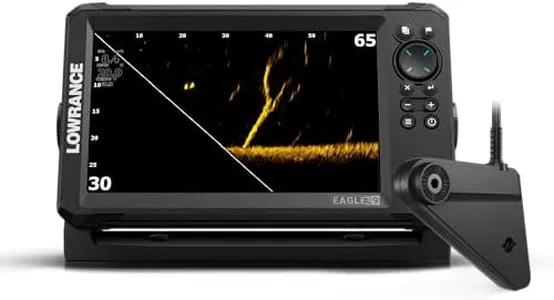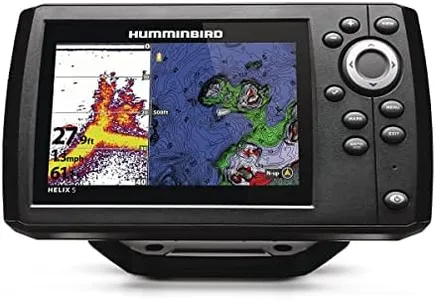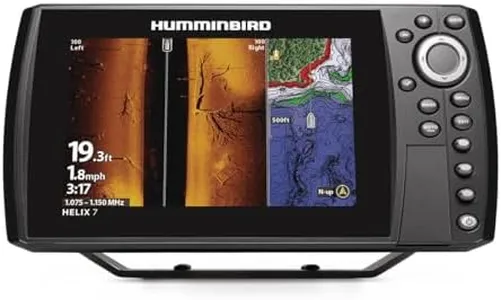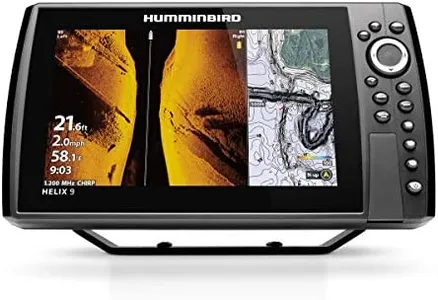10 Best Side Imaging Fish Finders 2025 in the United States
Our technology thoroughly searches through the online shopping world, reviewing hundreds of sites. We then process and analyze this information, updating in real-time to bring you the latest top-rated products. This way, you always get the best and most current options available.

Our Top Picks
Winner
Humminbird XPLORE 9 GPS Fish Finder with Transducer, MEGA Side Imaging+ & HD Touchscreen Display
The Humminbird XPLORE 9 GPS Fish Finder is equipped with a 9-inch full HD touchscreen display, which offers excellent visibility and ease of use whether you prefer touch or keypad controls. The screen size and resolution (1280 x 720) ensure clear and detailed imaging, which is crucial for identifying fish and underwater structures. This fish finder boasts premium sonar technology, including MEGA Side Imaging+ with a 200-foot range and MEGA Down Imaging+ that reaches depths of 200 feet, along with Dual Spectrum CHIRP for precise fish detection. The built-in advanced GPS navigation system is a significant asset, providing coverage of over 10,000 lakes through the Humminbird Basemap, and it comes bundled with LakeMaster and CoastMaster VX map cards for extensive U.S. and Canada regions.
This integration facilitates real-time mapping features like AutoChart Live, which allows you to create detailed maps of your fishing spots, recording up to eight hours of data. Connectivity options are robust, including high-speed Ethernet and Bluetooth, making it compatible with the NMEA 2000 network and seamlessly integrating with other products like Minn Kota and Cannon. This compatibility is ideal for anglers looking to build a comprehensive fishing system. One downside is the product's weight at 9 pounds, which may be a consideration for some users. The two-year warranty provides peace of mind, ensuring long-term reliability. Given its advanced features, this fish finder is best suited for serious anglers who need high-quality imaging and mapping capabilities for a professional-grade setup. It may be overkill for casual fishers or beginners due to its extensive feature set and higher price point.
Garmin ECHOMAP UHD2 94sv with GT56 Transducer, 9" Touchscreen Chartplotter, Garmin Navionics+ U.S. Coastal
Most important from
148 reviews
The Garmin ECHOMAP UHD2 94sv is an impressive option for side-imaging fish finders, especially for anglers seeking clarity and ease of use. Its 9-inch touchscreen is bright and easy to read, even in sunlight, which is a significant advantage during outdoor fishing trips. The included GT56-TM transducer offers excellent traditional, ClearVü, and SideVü scanning capabilities, allowing you to see underwater structures and fish with great detail, enhancing your fishing strategy.
One of the standout features is the built-in Garmin Navionics+ coastal charts, which provide detailed mapping that can guide you to the best fishing spots. The device also offers built-in Wi-Fi connectivity, allowing you to share sonar data, waypoints, and routes with other ECHOMAP UHD2 units wirelessly. This is particularly useful if you're fishing with a partner or need to coordinate with others on the water.
While the ECHOMAP UHD2 is packed with great features, it might have a bit of a learning curve for those who are not tech-savvy. Some users may find the multitude of options slightly overwhelming at first. Additionally, while the touchscreen is responsive, using it with wet hands or in the rain could be a challenge, which is something to keep in mind in tougher weather conditions. In terms of power output and frequency, it performs well within its category, though it’s always good to check if it meets your specific fishing needs. The choice of mounting, whether dashboard or flush, adds versatility but may require some additional tools for installation.
For recreational boaters and serious anglers alike, the Garmin ECHOMAP UHD2 94sv provides an excellent combination of functionality and advanced features, establishing it as a strong contender in the side-imaging fish finder market.
Most important from
148 reviews
Humminbird 411350-1 Helix 8 Chirp MEGA SI+ GPS G4N Fish Finder
Most important from
26 reviews
The Humminbird 411350-1 Helix 8 Chirp MEGA SI+ GPS G4N Fish Finder is a versatile tool for anglers looking to enhance their fishing experience. With an 8-inch color TFT display, it provides clear and vivid visuals, making it easier to identify fish and underwater structures. The MEGA Side Imaging+ and MEGA Down Imaging+ technologies offer impressive clarity, allowing you to see up to 200 feet out to the sides and below your boat with 20% more detail and extended range compared to previous models.
This can be particularly useful for identifying fish and underwater structures in greater detail and scope. The Dual Spectrum CHIRP sonar provides highly-detailed fish arches and a clear view of fish-holding structures and the bottom, with options for wide or narrow coverage based on your needs. The built-in GPS and Humminbird Basemap feature give you access to charts of over 10,000 lakes, as well as coastal coverage for the continental U.S., making navigation easier and more reliable. Premium chart compatibility, AutoChart Live, and One-Boat Network compatibility add to the device’s robust feature set, enabling real-time mapping and integration with other fishing tools.
High-speed Ethernet and Bluetooth connectivity support advanced networking and wireless updates, enhancing the user experience. However, the device has some drawbacks. Its relatively high price point and complexity might be overkill for casual anglers. Additionally, the 8-inch screen, while clear, may feel small to some users who prefer larger displays for easier viewing. Weighing 3.66 kilograms, it is also on the heavier side, which might be a consideration for some users. Despite these minor issues, the Humminbird 411350-1 Helix 8 Chirp MEGA SI+ GPS G4N Fish Finder is a powerful tool for serious anglers looking for advanced features and high performance.
Most important from
26 reviews
Buying Guide for the Best Side Imaging Fish Finders
Choosing the right side-imaging fish finder can significantly enhance your fishing experience by providing detailed images of the underwater environment. These devices use sonar technology to scan the water and display images of fish, structures, and the bottom terrain on a screen. To make an informed decision, it's important to understand the key specifications and how they relate to your specific needs and fishing habits.FAQ
Most Popular Categories Right Now
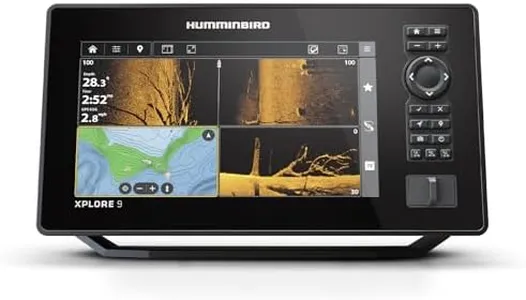
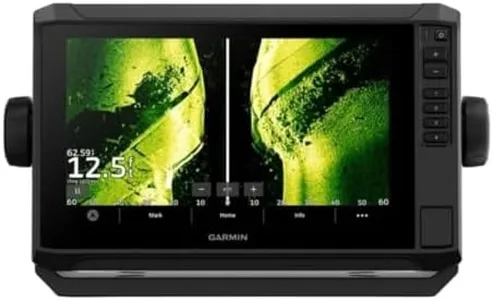
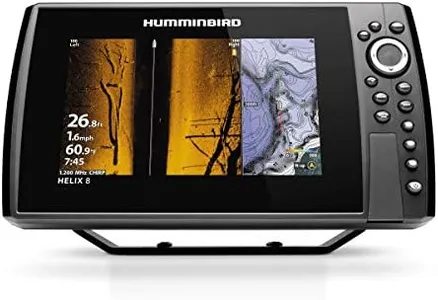
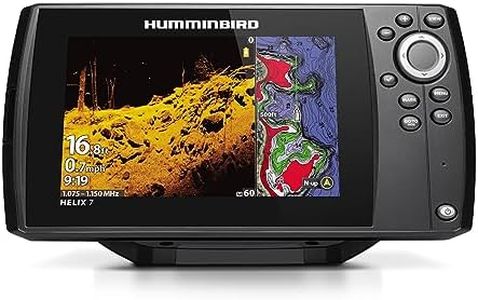
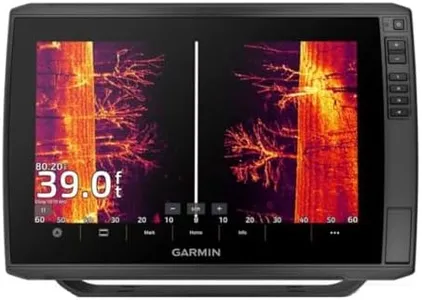
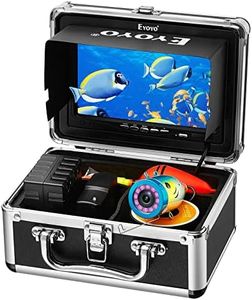

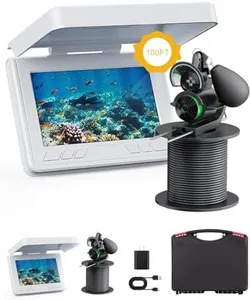

![[FishPRO® 2025 Upgrade] The PRO in Underwater Fishing Camera - 4.3'' w/DVR -32GB, 1000TVL (Easy Use for Any Age) Ice Fishing Camera Underwater, Fish Finder Camera w/3-Grade IR, USB-C, 5,000mAh, 50ft](https://images-proxy.bestreviews.guide/uzX7kmfE8-WPRT7L9whMAVB4kHU=/0x300/https://m.media-amazon.com/images/I/51p1QKlkVYL._AC_CX679_.jpg)
